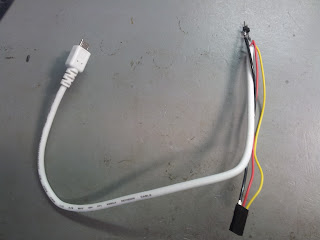Building Serval Mesh Helper Device Prototypes
by Dr. Paul Gardner-Stephen. Average Reading Time: about 3 minutes.
We finally have all the bits and pieces we need to assemble three prototype Serval Mesh Helper (SMH) devices, that under ideal conditions should be able to support links over tens of kilometres, instead of the tens of metres that WiFi is capable of.



Then it was a case of plugging all the bits together. The following shot shows the connections to the radio modules:

We need a USB memory stick for extra storage (the WR703N has only 4MB flash, much too small for a Serval Rhizome node that might want to cache giga-bytes of data), which entailed adding a passive USB hub so that both the radio and memory stick could share the single USB port on the WR703N.
We are powering the components from large 120Wh LiFePO4 batteries, that should be able to run these units for close to a week. We opted for using car accessory power connectors as vehicle power is the most likely backup power source we expect to encounter:

On the charging side of the batteries we used some nice connectors that we also fitted to our RedArc solar regulator, so that we can charge the batteries easily, including while using them to run the helper devices.
With such large batteries it is really important to make sure you have everything fused and protected against short-circuit, especially since we will be flying with these and don’t want to accidently melt a hole in a plane.

Then it was time to think about a convenient container that would fit everything, be easy to carry around, and be weather proof enough for use at KiwiEx 2013 in a couple of weeks time. Some $10 storage tubs did the trick. We will put a small bag of rice in each when we take them on field to absorb any condensation in the tubs. You can see everything in there happily running:



read original post on Dr. Paul Gardner-Stephen's Site
